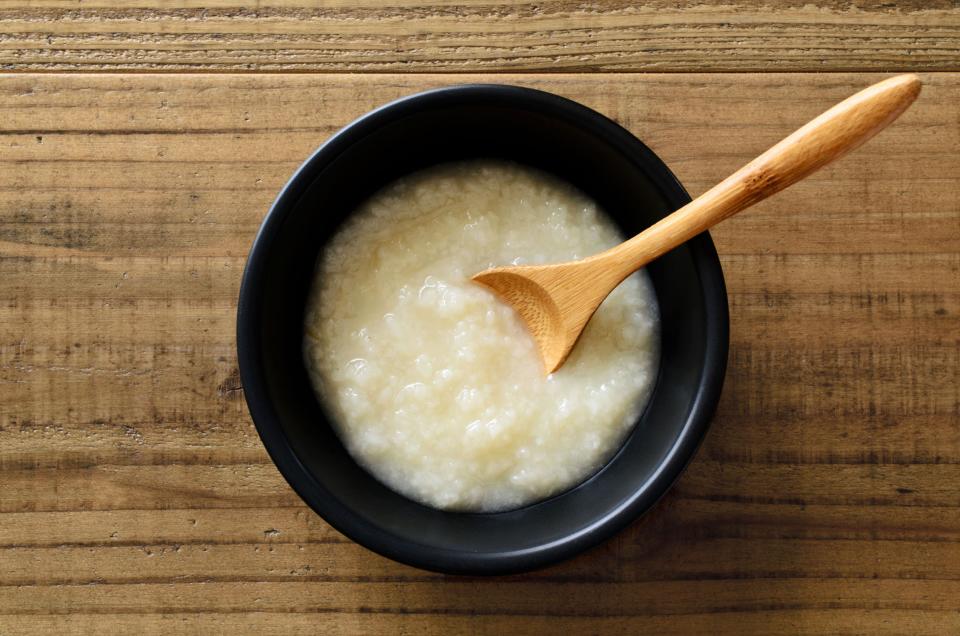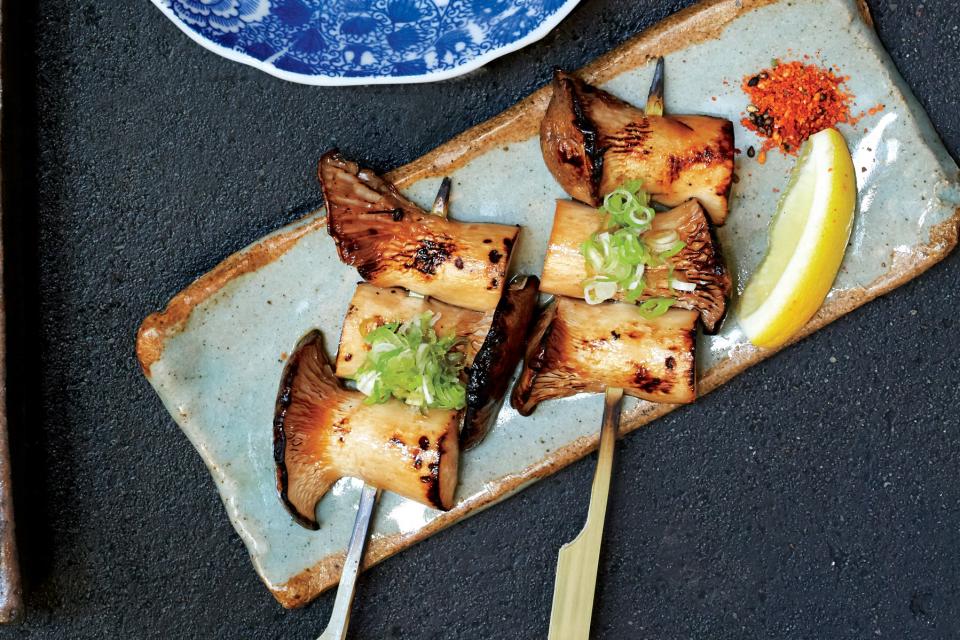How to Cook With Koji, the Savory Secret Weapon That Chefs Love (And You Can, Too)
To hear some chefs talk about koji—the mold-inoculated grains responsible for miso, soy sauce, sake, mirin, and a host of other ingredients—is to encounter a feverish zeal that borders on the unbelievable. In his YouTube series, Cook's Illustrated editor in chief Dan Souza says koji is "one of the coolest, most functional ingredients out there." Noma chef René Redzepi and fermentation-lab head David Zilber, co-authors of the Noma Guide to Fermentation, call it "indistinguishable from magic."
Cooks raised in koji-making cultures show a similar respect. "You can't talk about Japanese cooking without talking about koji, " says Sonoko Sakai, Los Angeles-based cooking teacher and author of Japanese Home Cooking. "All our basic seasonings are made with rice that has been inoculated with koji."
Over the past several millennia Chinese, Japanese, and Korean artisans have mastered the craft of cultivating Aspergillus oryzae (called koji-kin in Japan) on grains, primarily rice and barley. When the conditions are right for the mold to flourish on one of these mediums, its tendrils exude a plethora of enzymes to digest their food: protease enzymes to break down proteins into their component amino acids; amylase and saccherase enzymes to transform starches into simpler sugars; and lipase enzymes that turn fats into lipids, esters, and aromatic compounds.
Cooks then use inoculated rice or barley (called "koji"), now covered in a fluffy snowdrift, to set the enzymes to work. Depending on how it's harnessed, koji can bring out the sugars in rice to be fermented into amazake (sweet rice porridge), mirin, and sake. Or it can denature the proteins in beans and grains to produce crazily savory miso pastes and soy sauces.

Shio koji - HERO
The effects of koji, for the human sense of taste, are profound. As food scientist Ali Bouzari describes in Kara Platoni's book We Have the Technology, "The magic of koji is that it's a bunch of little happy molecular knives dicing up everything into small bite-sized pieces, so that there can be a greater chance it will be the right size and shape to fit into one of your [taste] receptors." (Again with the magic.)
If this all sounds like the kind of project that a technical-minded cook with some extra time on her hands should undertake, be warned: Cultivating A. oryzae requires strict attention to temperature, humidity, and grain texture. You can find detailed instructions on making koji in Sandor Katz's The Art of Fermentation, The Noma Guide to Fermentation, and Rich Shih and Jeremy Umansky's forthcoming Koji Alchemy.
Umansky, chef of Larder in Cleveland, and Shih, a mechanical engineer by training, have documented some of the ways that experimental American chefs are playing with koji, and their projects can sound obtuse and fanciful for those of us who aren't tasting the results: inoculating cocoa nibs with koji spores, curing pork loin and beets with koji, making miso-like amino pastes out of whole roasted squash. The book has the potential to play the same role that Chad Robertson's Tartine Bread did for sourdough: turning a million enthusiastic American home cooks into koji freaks. Then there are people like me who read Koji Alchemy, think about buying humidity controls and mail-order spores, and are immediately inoculated with exhaustion.
"I don't do the cheffy stuff," counters Sonoko Sakai. Though she teaches miso making classes, in her latest book she simply includes a recipe for shio koji, which is salt and rice koji fermented together to make a lumpy white liquid that she uses as a seasoning, marinade, and tenderizer. "It's pretty amazing," she says. Shio koji may have ancient origins, but Sakai says it only became popular in Japan 15 years ago. Now, it’s everywhere.
Miso and Japanese soy sauce, made by culturing pulses and grains for many months, represent the end point of the koji magic; our palate senses these condiments as flavor bombs because the mold’s enzymes have already unlocked so many savory amino acids such as glutamate—the "g" in MSG—from the base protein.
Shio koji isn’t quite so glutamate-rich. Instead, it sets koji’s enzymes to work on the ingredients you're about to cook.
Japanese grocery stores in the U.S., as well as online stores, sell shelf-stable pouches, as well as a clear golden liquid decanted off the grains. I tried both over the course of three koji-filled weeks. Small-scale miso makers in some large cities, such as Jorinji in Portland and Aedan Fermented Foods in San Francisco, also sell shio koji on the side.
To taste shio koji on its own is to smell its fruity aroma, sense a round sweetness on the tip of the tongue akin to that of mirin or sweet white miso, and then...the shadow of a presence, as if the flavor that occupies a parallel dimension and is desperately trying to press through to your side.
Sakai likes to smear shio koji on salmon, set it in the fridge for a day or two, then wipe it off and cook the fish. Rich Shih says he only marinates fish for a short time, but recommends a day or two for red meat. Both recommend weighing the meat on a gram scale, then using one tenth its weight in shio koji.
I cut a tri-tip into slices and marinated half with shio koji, then cooked both kinds in side-by-side pans, using slightly lower heat for the marinated beef because the sugars in the marinade char easily. Marinating with salt always plumps up meat, so the welcome juiciness of the koji-touched beef was no surprise. But all the gaminess in the beef—that hit of warm paddock and two-ton mammal—was replaced by a meaty richness that was not beef and more than beef. I tried the same experiment on steamed black cod and pan-roasted pork chops. Here the results were subtler; yet each time I greedily inhaled the marinated versions, then distractedly picked at the rest.
Mutsuko Soma, chef-owner of Hannyatou in Seattle, had only come across shio koji here and there when she was growing up in Japan. It only became an essential staple in her kitchen after she and partner Russell King read The Noma Guide to Fermentation. Now koji-based foods are everywhere in their kitchen, including their famous jalapeño-cheddar-bagel and Cocoa-Puffs misos. Soma uses shio koji for chicken stock. "I marinate roasted chicken bones with it overnight, then braise the bones for one hour," she says. "It tastes really different."
King is most fond of another koji condiment: shoyu koji, where the koji grains ferment in soy sauce instead of salt water. (Branded "Umami Puree," it's available on Amazon.) He uses it in his ramen broth, in a dressing a chicken breast, and dabbed onto a bowl of rice along with a pat of butter.
Aaron Adams, chef-owner of Farm Spirit in Portland, began making his own miso using store-bought koji several years ago and then started culturing his own after attending one of Rich Shih's workshops. "Our vegan food is based on fruits, vegetables, and grains, not meat analogs (like tofu or gluten), so we really push savory-ness as hard as we can," he says. "Koji helps unlock that."

56389994 king-trumpet-yakitori
He particularly likes to marinate hearty vegetables like eggplant, mushrooms, broccoli, and cabbage with shio koji, he says, which his cooks roast, grill, or sauté, sometimes finishing with a mist of shio koji juice. They also make a more complex shio koji marinade incorporating olive oil, lime juice, and roasted-garlic purée.
"Spread that on some mushrooms and grill them, and it's stupid," Adams says.
In my home kitchen, I’ve found that koji marinades didn't play particularly well with strongly acidic flavors, and if the stews and chilis I stirred spoonfuls into received a umami bump, it wasn't hugely noticeable. But koji-marinated carrots, haunted by sweet and saline notes, became a favorite snack. A spoonful of the Umami Puree turned sautéed cabbage into an instant main course.
In fact, I quickly ran through my stocks of shio koji. When I sought out more, I came across tubs of Cold Mountain's dried rice koji and realized I didn't have to culture spores to take on some of the projects in Shih and Umansky's book. A jar of Instant Pot-enabled amazake is now in my fridge, and another of shio koji is fermenting on the kitchen counter. I've been recruiting friends with stronger project-cooking tendencies than I to make local-bean misos and koji-ricotta cheese together someday. I wouldn't go so far as to call koji magic, but it certainly casts a spell.
Originally Appeared on Epicurious
